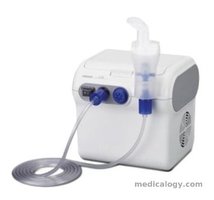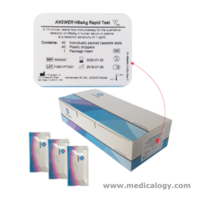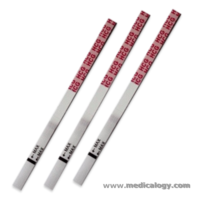- info@medicalogy.com
- 0877 7555 4616

Rapid Test Answer HBsAg 50 Strip/Box
Dijamin original dan bergaransi
Highly sensitive and specific (>99%).
Easy for the operator to learn and use.
Harga Rapid Test Answer HBsAg 50 Strip/Box :
Produk yang dibeli bersamaan:
Deskripsi Rapid Test Answer HBsAg 50 Strip/Box
One option for confirming reactive results is to take a second rapid test, from a different manufacturer, immediately. If the second test is not reactive, it can be presumed that the person is not infected (as the tests are extremely sensitive). If the second test is reactive, it is likely that the person does have HIV, but a third test could still be performed.
Nonetheless, the most common practice for most providers of rapid tests is to suggest that a negative result is definitive, but that a reactive result simply indicates the need for further laboratory testing.
Rapid tests are frequently available at outreach clinics run in the premises of voluntary organisations, community centres, commercial venues etc. An increasing number of NHS sexual health clinics also provide them, though they may be offered only to people with a higher risk of infection, to people with an urgent need to receive results, and to people who are very anxious.
Rapid tests were first developed in the early 1990s for use in developing countries (where specialised laboratory facilities may not be available), and their uptake has been very different in different countries. In the United States, the CDC has recommended their use with high-risk populations since 1998, and they have been an integral part of the testing strategy since 2003.
The UK testing guidelines are considerably more cautious: their use should be limited to clinical settings where a rapid turnaround of testing results is desirable, community testing sites, circumstances when venepuncture is refused, and for urgent source testing in cases of exposure incidents (e.g. before PEP).
Dozens of rapid tests have been developed, but to be suitable a test needs to be:
- Highly sensitive and specific (>99%).
- Easy for the operator to learn and use.
- Easy to read the result.
- As non-invasive as possible.
- Without complex storage requirements
Review Rapid Test Answer HBsAg 50 Strip/Box
Belum ada ulasan.







